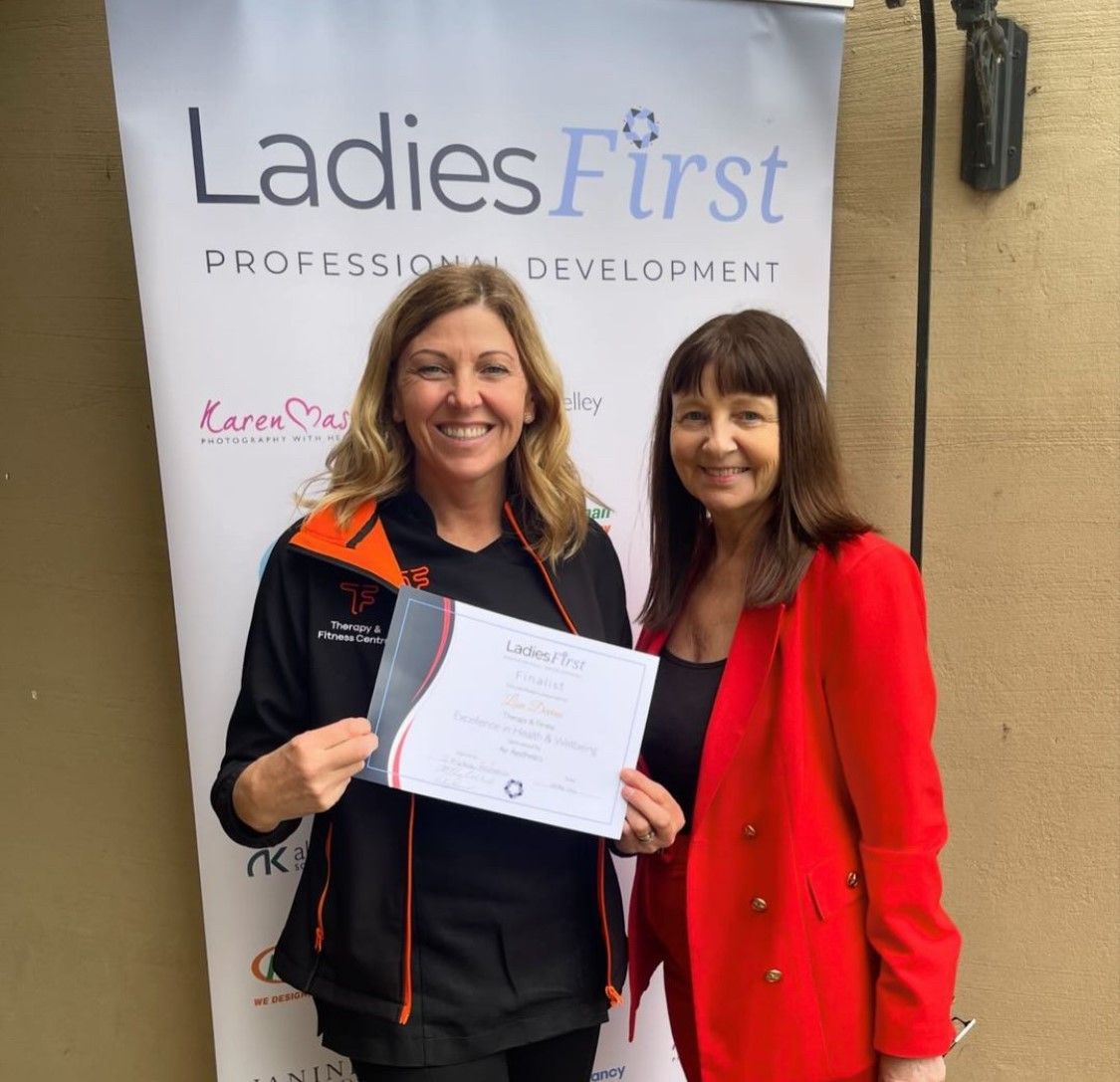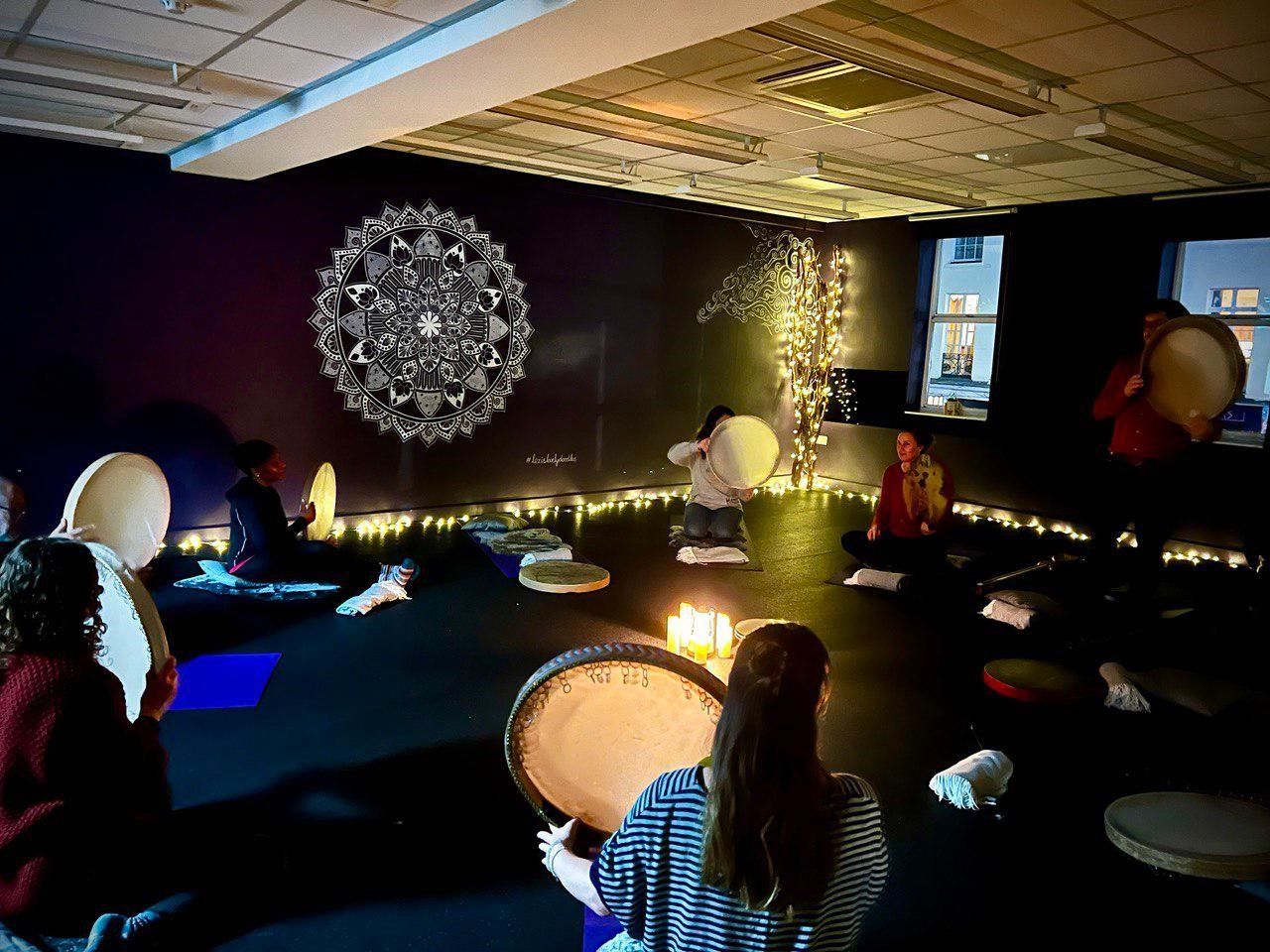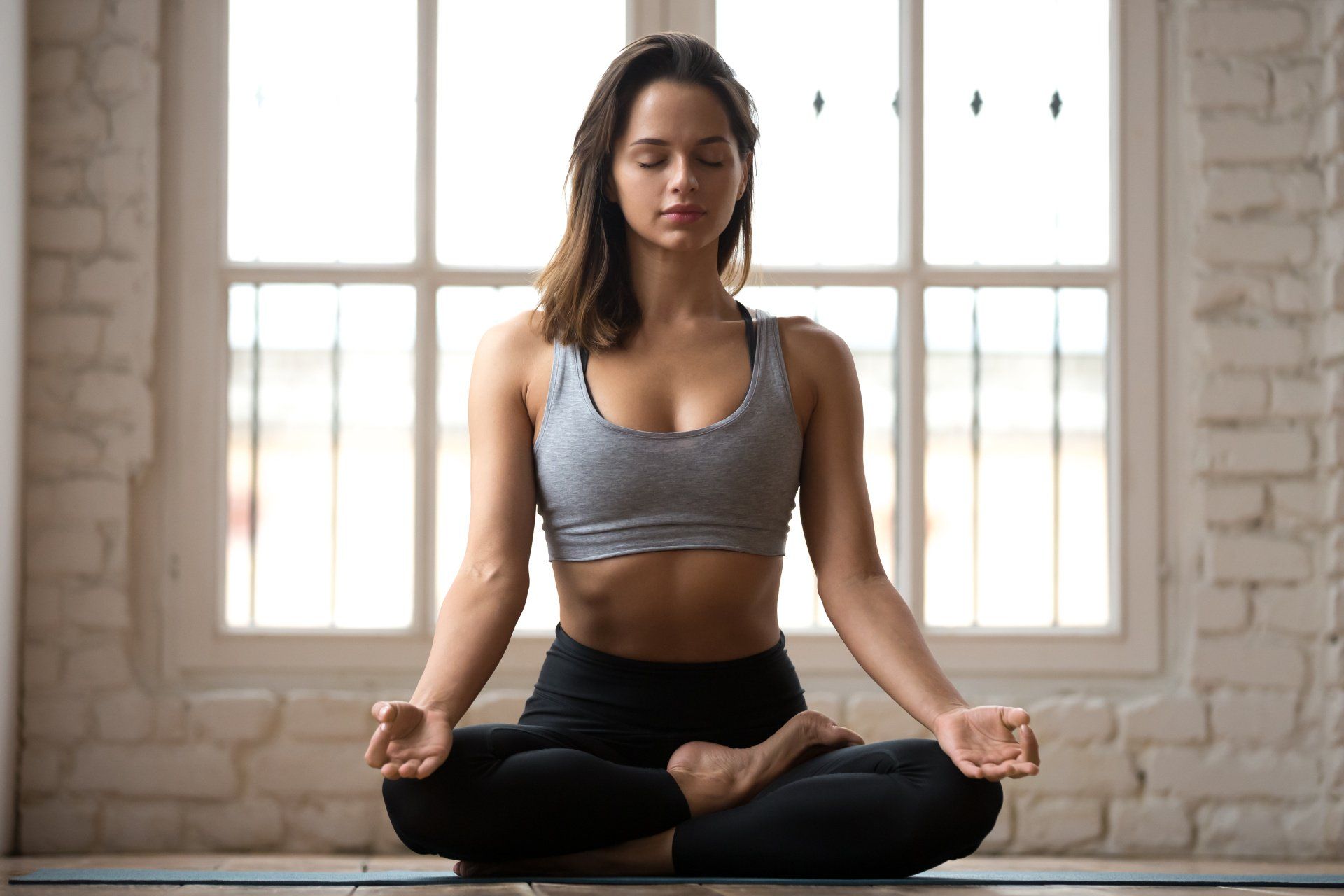Standing extension
Standing up with good posture, place your hands in the small of your back for support and extend your back by arching your spine backwards. Start gently, and keep the exercise within your comfort zone.
· Physiotherapy · Sports Massage · Manual Lymphatic Drainage · Podiatry · Acupuncture · Pregnancy Massage · Indian Head Massage ·
Enquire today
· Body Wellness ·
The lower back also known as the lumbar area has a number of important functions. These include structural support and movement.
It’s not always possible to identify the cause of back pain but its rarely anything serious. Back pain mostly originates from the joints, bones or muscles in and around the spine.
These are typical symptoms you might experience:
It’s usually nothing to worry about if back pain can be associated with a specific activity, such as lifting or twisting and the pain doesn’t go away within 72 hours after resting and applying ice. A sports massage can help eliminate any tensions that builds up in the muscle tissues so you can avoid further injury.
Seek medical advice if:
Tips for dealing with lower back pain:

Standing extension
Standing up with good posture, place your hands in the small of your back for support and extend your back by arching your spine backwards. Start gently, and keep the exercise within your comfort zone.
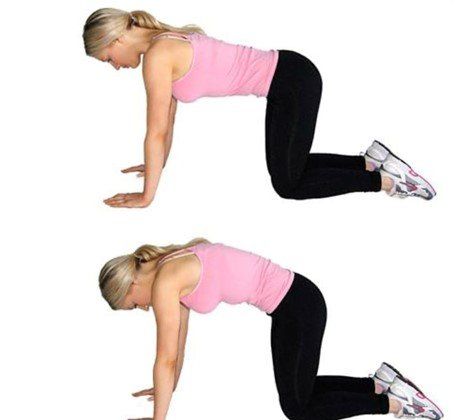
Cat / Camel
Come onto your hands and knees, making sure your hands are under your shoulders, your knees are under your hips and your back is in a neutral position.
Cat: Breathe in and sink your back down towards the floor and lift your head up at the same time, sticking your tailbone out to make a curve with your spine.
Camel: Breathe out and tuck your head and tailbone in, arching through your spine as to mimic a camel hump
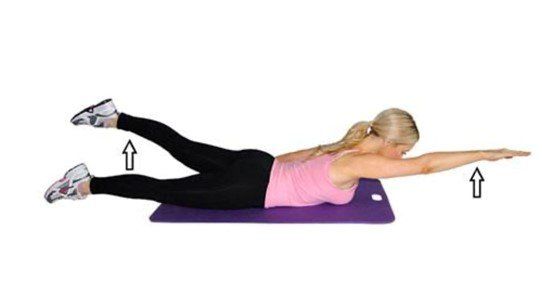
Floor superman opposite limb
Lie on your front, and lift your opposite arm and leg, keeping them straight. Hold this position, and then relax.
This exercise helps to arch your lower back (to create what is known as a lumbar Hyperlordosis) while strengthening the lower back and buttock muscles.
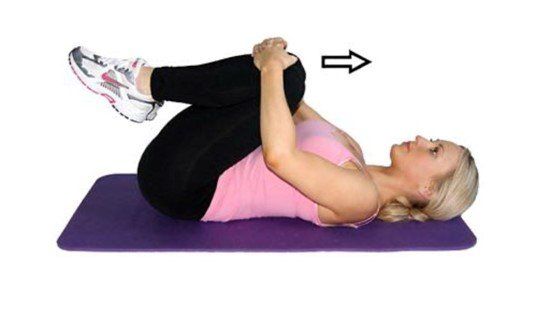
Double leg back stretch
Lie flat on your back, and bend your knee towards your chest. Hold this position and feel a gentle stretch in your back.
If you get any groin pain while doing this exercise, stop and inform your therapist. Relax, and then repeat as necessary.
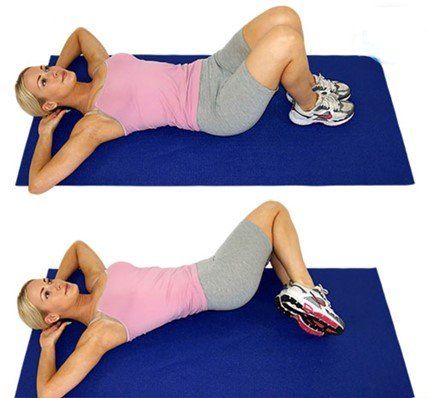
Oblique stretch
Lie flat on your back, and bend your knees. Place your hands above your head. Keeping your knees together, gently drop them to the floor to create a rotation through your back.
Go as far as feels comfortable.
Your feet do not need to remain flat on the floor. Rotate to the other side. Make the exercise stronger by placing your arms above your head.
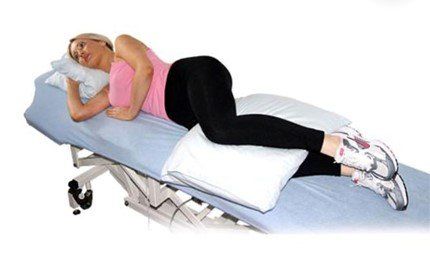
Sleeping position side
If you find sleeping uncomfortable, try lying on your side, and place a pillow between your knees.
If you have leg pain or one-sided lower back pain, usually you will find it more comfortable to lie on the opposite side to your leg/back pain. Do not sleep on the floor.
Sleeping position back
You may prefer to sleep flat on your back. If you do, you may get some relief from back pain by placing a pillow under your knees. Use one or two pillows, whichever you feel is more comfortable.
Do not sleep on the floor.
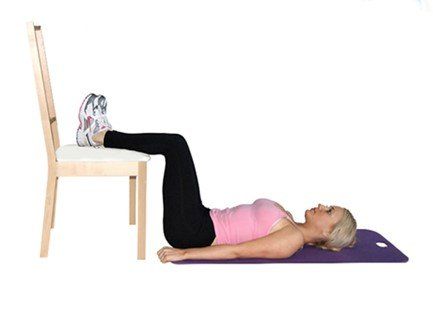
Lumbar decompression with a chair
Lie flat on your back, with your feet resting on a chair. Relax in this position. You can place your arms above your head if you wish. This exercise is a decompression exercise for the spine, especially useful for lumbar disc problems.
Do this when in severe pain to help relax the lumbar in a neutral position.
If you experience any pain then please contact your therapist.
